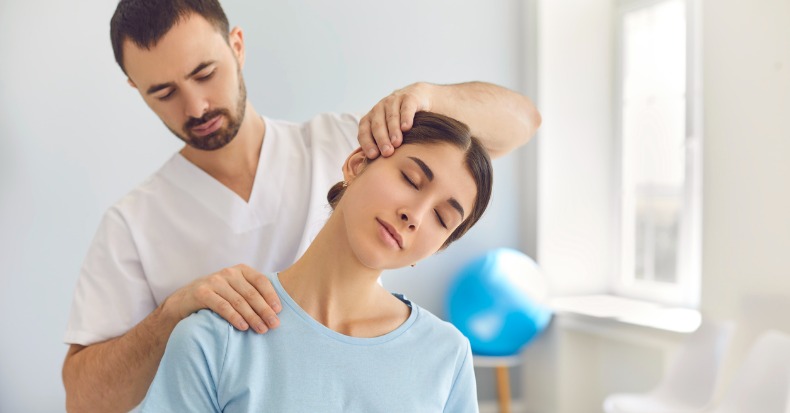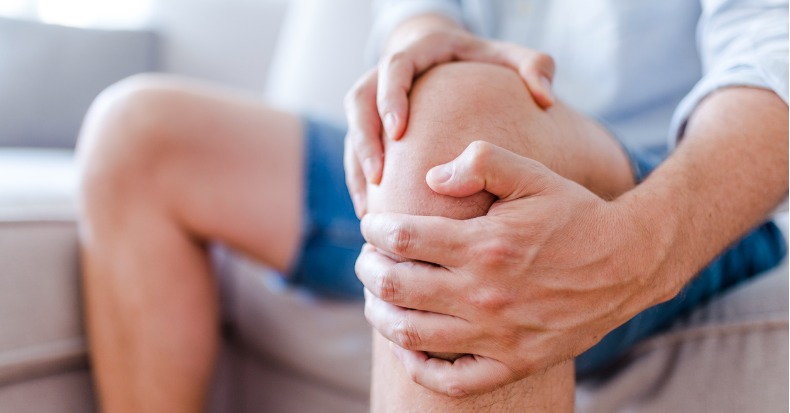Low back pain (LBP) and pelvic girdle pain (PGP) are common complaints during pregnancy with some studies suggesting these conditions affect up to half of expecting mothers. In the postpartum period, it’s estimated that as many as one in-five women will continue to experience these forms of musculoskeletal pain up to three years following the […]
Testing for Suspected Carpal Tunnel Syndrome
When an individual’s hands and fingers start tingling, they will most often suspect carpal tunnel syndrome (CTS). However, pressure on the median nerve anywhere along its course from the neck to the hand can produce similar symptoms in the hand and fingers. So what is the best way to diagnose CTS and differentiate it from […]
5 Exercises to Fight Forward Head Posture
Even though poor posture can impair physical function and affect one’s health, it’s very common to see people with a slouched, forward head posture. Aside from advice to sit up straight, limit phone use, or hold devices at eye level, are there any exercises that can help reverse forward head posture? The answer: “YES!” Let’s […]
Manual Therapy for Cervicogenic Headaches
By some estimates, up to 20% of headaches are caused by a disorder of the cervical spine and its components (bone, disk, and soft tissue) usually accompanied by neck pain. It’s very common for patients with a cervicogenic headache to seek and receive manual therapies—like spinal manipulation and mobilization—from chiropractic care. Spinal manipulation is characterized […]
The Chiropractic Diagnosis and Treatment Process for Whiplash
Following a car accident, slip and fall, or sports collision, many whiplash associated disorder (WAD) patients are advised by friends, family, co-workers, or an attorney to see a doctor of chiropractic. For many WAD patients, this may be their first experience with chiropractic. What can they expect? During the initial visit, the patient will first […]
High-Intensity Interval Training: How Much Time is Needed?
We all know we need to regularly exercise as part of a healthy lifestyle, but many don’t because they feel that they don’t have enough time in the day to work out. In recent years, a form of exercise called high-intensity interval training (HIIT) has gained attention in both gyms and the scientific literature as […]
Chiropractic Care for Acute Injuries
In the floor of the main hall of the Jordan Hall of Science at the University of Notre Dame there is a mosaic medallion, which states: “Nothing in Biology Makes Sense Except in the Light of Evolution” This saying is from Ukrainian-American Geneticist and Evolutionary Biologist, Theodosius Dobzhansky (1900-1975). Dobzhansky originally made this statement in […]
Traction for Low Back Pain
When it comes to a condition like low back pain, the care a patient receives can depend on case history and examination findings, as well as the doctor’s training and treatment preferences. For the patient with a lumbar disk pathology, a doctor of chiropractic may employ lumbar traction in combination with manipulation and joint mobilization […]
Three Reasons Why Carpal Tunnel Syndrome Is So Stubborn
Carpal tunnel syndrome (CTS) is by far the most frequent cause of a nerve entrapment in the extremities. Despite it being such a common complaint (estimated to affect 1 in 1,000 American adults), CTS can be a difficult condition to manage. Here are three reasons why… 1) Multifactorial. While activities (a job or hobby) that […]
Lowering the Risk for Knee Osteoarthritis
Osteoarthritis is the most common chronic joint condition. It causes local inflammation and breakdown of cartilage with joint structural changes that provoke pain and loss of function that results in a considerable reduction in quality of life. Knee osteoarthritis (KOA) is one of the most disabling osteoarthritic conditions and it’s becoming more prevalent. So, what […]
- « Previous Page
- 1
- …
- 34
- 35
- 36
- 37
- 38
- …
- 156
- Next Page »










